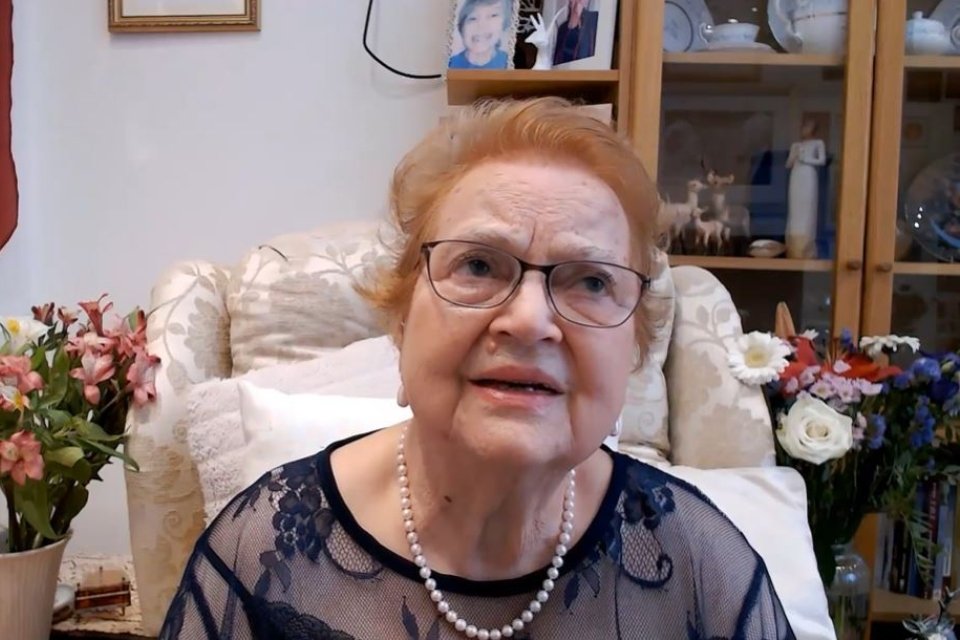Surely you have dreamed that you could talk to a friend or family member who has passed away once again. In fact, it is one of the ways experts recommend for dealing with grief.
In an interview given to the UOL portal in 2021, Maria Júlia Kovács, emeritus professor at the USP Institute of Psychology (University of São Paulo) and founding member of the Death Research Laboratory, said that when a loss through death occurs, the face-to-face bond is cut; however, ties with close people such as siblings, fathers, mothers, grandparents, spouses are never broken:
“Most of the time it’s like the person is there. We keep talking to them, telling them something. This supports the memory. The person stays in our lives, not personally, because that’s not possible anymore, as a memory,” Kovács told UOL.
Today, the grieving process, which consists of several stages, has been influenced by technology. Far beyond photos and videos recorded with a cell phone, it’s possible to visit the profiles of loved ones on social networks, receive unexpected reminders from apps like Google Photos or TimeHop, and even, in more extreme cases, discover that a friend has died. or relative, captured by the Google Street View lens.
All this gives us new and different ways to revisit memories and remember people who are no longer with us. However, it does not end here.
Thanks to technological advances, the so-calledgrief technology” (grieving technology) is taking bigger and bigger strides. One of them is the controversial artificial intelligence system that lets you talk to the departed.
How does it work?
Recently, international portals reported that an 87-year-old woman “talked” to people attending her funeral. Marina Smith, who died in June of this year, surprised her friends and family who were able to chat with her one last time through a holographic video-talk experience.
This was provided by StoryFile, a Los Angeles-based startup founded by Marina’s sons Stephen Smith and Heather Maio-Smith. It all started as Heather’s project to preserve the memory of Holocaust survivors in 2010.
You can watch Marina Smith’s StoryFile here.
After developing a 3D prototype, Maio-Smith took the project to the Shoah Foundation and Institute of Creative Technologies, both at the University of Southern California, and formed a partnership to develop the interactive interview methodology.
It works like this: The person whose memory will be preserved with 20 cameras answers around 250 questions. Data from this interview is software able to almost reconstruct one’s speech even after death.
In 2017, Smith launched StoryFile to create an automated, no-code, cloud-based platform to expand the reach of this technology.
According to the futurism portal, the reactions following Marina Smith were diverse: There were those who found the technology extraordinary, as well as those who feared what could be done through artificial intelligence.
Other initiatives
The Startup StoryFile isn’t the only example of companies working on technology to reconnect with the dead.
In 2021, Fantástico reported that artificial intelligence was used to exchange messages with deceased people. Canadian Joshua [sobrenome não divulgado pela reportagem] used an artificial intelligence program developed by Open AI to simulate a nearly ten-hour conversation with the bride who died eight years ago; HereAfter AI lets you interact with your loved ones through a mobile app; among others.
And what does it mean?
According to Amit Rooy-Chowdhury, director of the robotics division at the University of California, the tendency to anticipate is common when developing such complex technology.
An example of situations where similar systems are used is the appearance of actress Carrie Fischer in the film. Star Wars: Episode IX – The Rise of SkywalkerThe narration of chef Anthony Bourdain, who was released in 2019, three years after his death and passed away in 2018, in a documentary about his life released in 2021.

Situations like this raise the question of how this technology can be used for production. deep fakebut also how they affect society’s view of death and the grieving process.
Joanna Stern, technology columnist The Wall Street GazetteWrote newsletter Modern Lost: “This is what happens when it comes to death – it often surprises us. There’s no way to fully understand what the void will be in our lives after our loved ones are gone. And there’s no way to do that either. Send it magically. But sometimes in a moment of silence Being present, sending a message, or even talking to a robot can help a bit”.
Preserving the memory of loved ones who motivated the creation of the StoryFile is an important way to keep these people in our lives, if not personally. It even makes it possible for future generations to get to know their ancestors and family history better.
These forms of communication with the deceased are a way of internally elaborating and processing the loss. Writing letters, talking, reconsidering memories all help to get through the grieving phases.
According to psychologist Deusa Samu, in an interview with UOL, the decision to use these resources is solely up to the grieving person. “Whether the grieving person’s attitude is encouraging or not, the people who live with him or her should offer unconditional partnership. ‘I am here’ means, and that ‘I am here’ includes attention, friendship and welcome, not interfering by saying ‘You won’t read, don’t do, don’t text’ This kind of stance is disrespectful, inhumane”.
Source: Tec Mundo
I am a passionate and hardworking journalist with an eye for detail. I specialize in the field of news reporting, and have been writing for Gadget Onus, a renowned online news site, since 2019. As the author of their Hot News section, I’m proud to be at the forefront of today’s headlines and current affairs.













